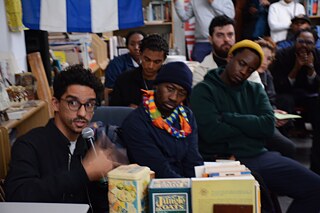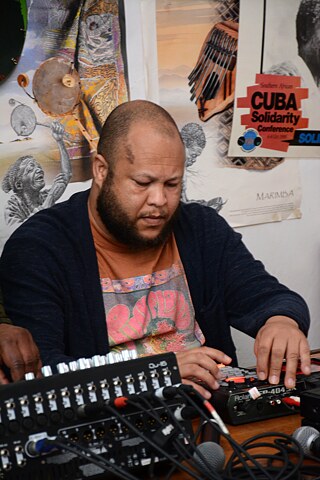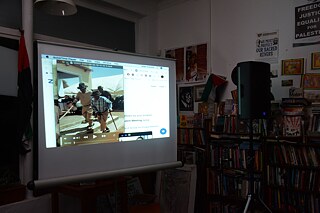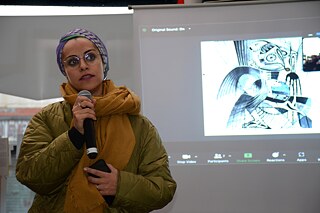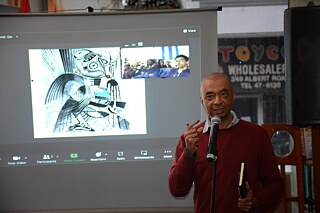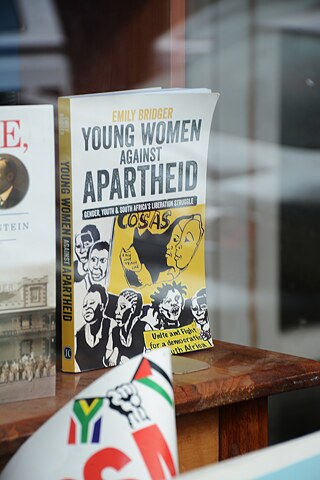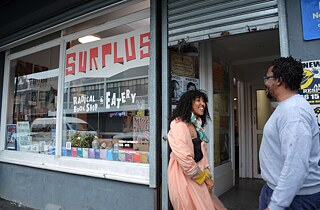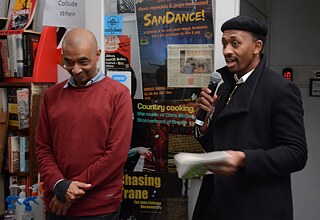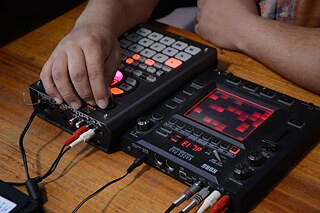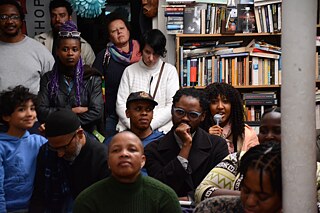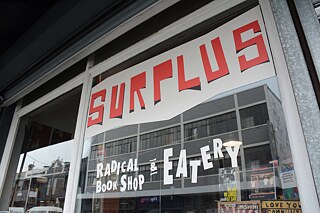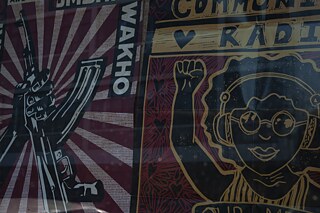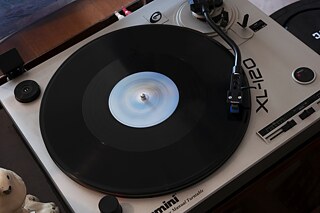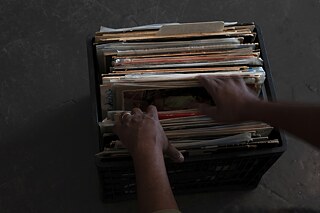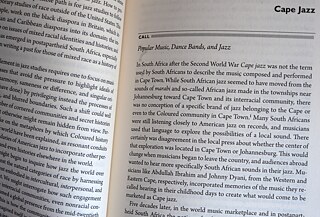The Sonic Power Toolbox
by Dr Valmont Layne
What is the sound that starts the revolution? What is the soundtrack of a movement? How can sound be used to destabilise truths we’ve held dear?Sound has taken its place in artmaking around the global south as a productive space from which to build newness, agency and critical public thinking. In this session we explored the craft of sound making, and its legacies in the practices of two leading sound makers and thinkers. Dr Valmont Layne and Aidan Erasmus facilitated the discussions during the session.
For Michel Bhatch the answers lie in the search for recorded material - crate digging - which he can then organise and rearrange to say something new. In the case of the sonic set he shared on the night this also includes highlighting voices that can easily be forgotten.
Bhatch sets out his work at the coalface of a sonic countercultural practice, sharing a sense of its ethics, its modes of working. He focuses on the practice of sampling, drawing on the iconic underground figure J Dilla among others, demonstrating what it is and how it makes sonic magic that integrates critical thinking.
This night his set started with a poem recited by an uncredited feminine voice from a Don Ellis record. Bhatch spoke to the ban of particular music under the apartheid regime and how sailors became conduits for bringing in music from across the globe into the country. Because of this there is a dearth of physical music that has yet to be touched.
Bhatch sees his crate digging and sonic creations as filling a gap that the internet cannot. He also explained how he saw the Cape and its history as intimately connected to the Black Atlantic.
Dinga Sikwebu recounts his introduction to jazz listening through an account of his activism in trade union movements, worker struggles for access to cultural resources, and through his ongoing passion for jazz as a serious art form linked with a practice of freedom.
Sikwebu’s presentation takes with clips of different social scenarios where South Africans were dancing to music. All of them were middle-age and above.
A man in a yellow shirt and brown shoes gliding across the floor with incredible footwork.
An old woman with a plaid skirt, plaid red shirt, leather vest, red beanie, and sunglasses dancing to some jazz.
A trio of men all with canes dancing on some steps at a function.
His videos showed South African’s propensity towards a music listening culture that is communal and embodied. His presentation demonstrated how jazz appreciation clubs have played an important role in workers advocating for themselves within large organisations.
#capetown #power #powertalks #immigrants #migrants #powertalksCT #powertalksZA #sound #countercultural #jazz
